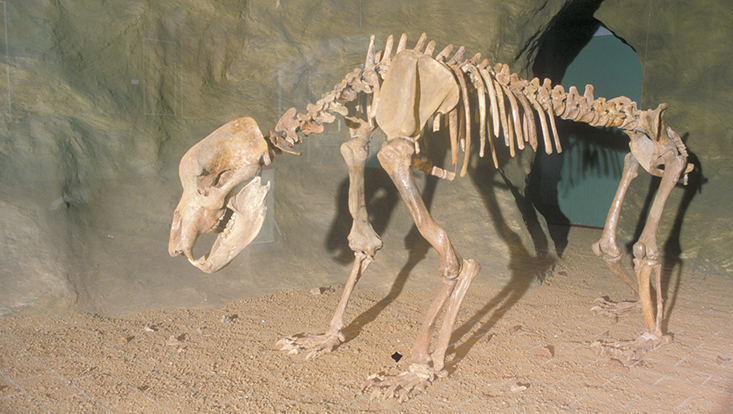
Treasure of the month: Ice age bear with living genetic material
3 September 2018

Photo: UHH/CeNak
Expert in paleogenetics: Swedish researcher Svante Pääbo.
The bones and teeth found in a cave in Franconian Switzerland in 1771 were initially attributed to polar bears by the naturalist and theologian Johann Friedrich Esper. The Flood had washed the fragments into the cave. Only about 20 years later it became clear that it had to be a larger, different bear species: the cave bear (Ursus spelaeus) was not only significantly larger than today's bears, but also had different dietary preferences. Recent research shows that cave bears survived - at least genetically. The cave bear in the Museum of Nature - Geology is our Treasure of the Month.
They are called bear caves or bear holes: In many karst caves, for example in the Swabian Alb or in Styria, masses of bones and teeth of the cave bears that died out around 27,000 years ago have been found. But even the name is deceptive. The Ice Age bears were not really cave dwellers. The animals merely retreated into protective caves for hibernation.
Ursus spelaeus, which is the scientific name, was a giant. Upright, the animals were up to 3.5 meters tall, reaching a shoulder height of about 1.7 meters. The species was widespread throughout Europe, from northern Spain to the Urals. The Hamburg cave bear in the Geological-Paleontological Museum comes from the Dragon Cave near Mixnitz in Styria. There, bones of about 3,000 individuals were uncovered, whose age was determined to be 30,000-40,000 years. The experts at the Center for Natural History use the skeleton as a case study for calculating the weights of extinct animals.
The extent to which giant bears were related to Ice Age hunter-gatherers is not fully understood. In particular, hunting by prehistoric humans is still largely unclear. The bears themselves apparently fed purely on plants. This is indicated by their large teeth and the content of nitrogen compounds in their bones.
Their diet could have been the animals' undoing, researchers suspect. Because with the cooling of the climate within the ice age the plant world and thus the food basis of the bears changed. Recent research shows, however, that the cave bear is not completely extinct: Genetic material from the Ice Age species can be found in the DNA of present-day brown bears. Scientists suspect that the bear species mated with each other. The discovery marks the first time that Ice Age genes have ever been detected in a living animal population. Incidentally, we humans also still carry Neanderthal DNA in us: the proportion in humans outside Africa is around 1.8 to 2.6 percent.
Further information on the Department of Paleontology
